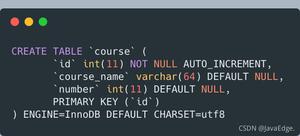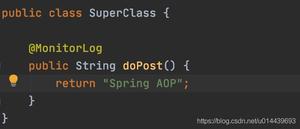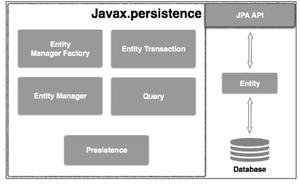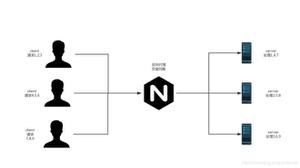学习Spring——依赖注入
本文内容纲要:学习Spring——依赖注入
前言:
又开始动笔开了“学习Spring”系列的头……
其实一开始写“学习SpringMVC”的几篇文章是出于想系统的了解下Spring以及SpringMVC,因为平时在公司中虽然每天都在使用Spring相关的框架或者其他,但是绝大部分都是已经写好配置文件,做好相关配置,而我们能做的就是写一些与业务逻辑有关的Controller层面或者Service层面的代码。毕竟所做的产品成熟了,或者说框架越来越成熟了,我们对于底层原理的东西关注的就少了,认识也浅了。
个人感觉,颇具讽刺意味的是,“SpringMVC”系列的HelloWorld篇发出去后,每日阅读量出现了比以外任何一篇都要快的尴尬式增长,如今已经成为我第一篇超过5位数阅读量的文章,汗-_-!
本来只是想在了解了SpringMVC的套路后,稍稍的看下佟刚老师的Spring视频就算了。可是后来有网友问SpringMVC系列是否还有后续,我想了一下,那如果有的话可能就是Spring基础相关了吧;而且,有些东西只是抱着看一看的心态,最后得到的也就是看一看的反馈,一个小时又或是一天之后就完全忘得一干二净了。所以,算是一份笔记吧,这里开了个头。
通过之前SpringMVC的学习,似乎在某些瞬间,我似乎看到了一些与自己项目中似曾相识的套路,只是之前因为项目过大,或者自己做的只是一些细微的调整,很难发现项目的大森林全貌。学习Spring的时候,我也希望能够重现类似的桥段,这样的学习就是有回报的,值得的。
毫无意外可言,第一篇讲的还是HelloWorld(主要是依赖注入的特性)。
Spring
Spring 是一个开源框架。
Spring 是一个 IOC(DI) 和 AOP 容器框架(Spring的两大法宝)。
Spring框架是由于软件开发的复杂性而创建的。Spring使用的是基本的JavaBean来完成以前只可能由EJB完成的事情。然而,Spring的用途不仅仅限于服务器端的开发。从简单性、可测试性和松耦合性的角度而言,绝大部分Java应用都可以从Spring中受益(总而言之,Spring就是很腻害)。
官网:https://spring.io/
HelloWorld实例对比
首先,需要新建一个Java Project,新建完成目录结构如下:
如你所见,这里还要一些需要用到的jar。
没有使用Spring的那一套
不可否认,在Spring没有横空出世的时候,太阳依旧是东起西落,地球如斯旋转。大概是这个样子:
新建HelloWorld类
public class HelloWorld { private String name;
public HelloWorld() {
System.out.println("HelloWorld's constructor...");
}
public void setName(String name) {
this.name = name;
}
public void hello(){
System.out.println("Hello: " + name);
}
}
新建测试方法
public class Main { public static void main(String[] args) {
HelloWorld helloWorld = new HelloWorld();
helloWorld.setName("Jackie");
helloWorld.hello();
}
}
最终你会如愿以偿的得到你期望的结果:“Hello:Jackie”
使用Spring后的这一套
使用Spring框架后,我们不能单纯的新建两个类就完事了,怎么说也对不起框架这两个字,于是我们需要:
新建一个Spring的配置文件beans.xml
<?xml version="1.0" encoding="UTF-8"?><beans xmlns="http://www.springframework.org/schema/beans"
xmlns:xsi="http://www.w3.org/2001/XMLSchema-instance"
xmlns:util="http://www.springframework.org/schema/util"
xmlns:p="http://www.springframework.org/schema/p"
xsi:schemaLocation="http://www.springframework.org/schema/beans http://www.springframework.org/schema/beans/spring-beans.xsd
http://www.springframework.org/schema/util http://www.springframework.org/schema/util/spring-util-4.0.xsd">
<!-- 配置一个 bean -->
<bean id="helloWorld" class="com.jackie.spring.helloworld.HelloWorld">
<!-- 为属性赋值 -->
<property name="name" value="Jackie"></property>
</bean>
</beans>
测试方法
这里我们大致分为如下几步:
1. 创建 Spring 的 IOC 容器
ClassPathXmlApplicationContext ctx = new ClassPathXmlApplicationContext("beans.xml");
2. 从创建的 IOC 容器中获取 bean 的实例
HelloWorld helloWorld = (HelloWorld) ctx.getBean("helloWorld");
3. 使用 bean实例
helloWorld.hello();
注意:
- ClassPathXmlApplicationContext ctx = new ClassPathXmlApplicationContext("beans.xml");HelloWorld helloWorld = (HelloWorld) ctx.getBean("helloWorld");实际上是容器初始化操作,包括本例子中执行helloWorld的构造函数以及执行setName方法
- 这里的ctx.getBean("helloWorld"),是在beans.xml中配置过的,getBean后的名字必须要和beans.xml中定义的id名称一致,否则无法获取该HelloWorld bean的实例
- 同时,我们发现,这里不再需要new了,我们只需要在一个称为IOC的容器中抓我们想要的对象即可,其实本质上来说,这不仅是一个框架的使用,更是一种编程思想的转变。没有使用Spring前,好比买菜要到菜市场,你得提个篮子去菜市场,可是有了Spring,我们轻松多了,把你的篮子甩到门口,自然就有人敲门送菜了。利用佟刚老师的话来说就是“传统的资源查找方式要求组件向容器发起请求查找资源. 作为回应, 容器适时的返回资源. 而应用了 IOC 之后, 则是容器主动地将资源推送给它所管理的组件, 组件所要做的仅是选择一种合适的方式来接受资源. 这种行为也被称为查找的被动形式”
依赖注入
Spring IOC容器之所以能取到HelloWorld类,完全是基于依赖注入机制,骨子里就是反射机制,但是依赖注入的方式有多种,这里做一个简单介绍
** 属性注入**
正如上面beans.xml中声明的那样,定义一个bean,id为helloWorld,class即类的全路径为com.jackie.spring.helloworld.HelloWorld
使用
** 构造器注入**
属性注入是通过set方法注入值,这里的构造器注入,显然是通过构造函数注入值的。举例来说:
新建bean Car类
public class Car { private String company;
private String brand;
private int maxSpeed;
private float price;
public Car(String company, String brand, float price) {
super();
this.company = company;
this.brand = brand;
this.price = price;
}
public Car(String company, String brand, int maxSpeed) {
super();
this.company = company;
this.brand = brand;
this.maxSpeed = maxSpeed;
}
public Car(String company, String brand, int maxSpeed, float price) {
super();
this.company = company;
this.brand = brand;
this.maxSpeed = maxSpeed;
this.price = price;
}
@Override
public String toString() {
return "Car [company=" + company + ", brand=" + brand + ", maxSpeed="
+ maxSpeed + ", price=" + price + "]";
}
}
相应的,在beans.xml中定义如下
<bean id="car" class="com.jackie.spring.helloworld.Car"> <constructor-arg value="DaZhong" index="1"></constructor-arg>
<constructor-arg value="Shanghai" index="0"></constructor-arg>
<constructor-arg value="250000" type="float"></constructor-arg>
</bean>
这里是根据car类的构造函数来的,value对应构造函数中每个参数的具体值,对应顺序通过index来标示,但是如果car中有多个构造函数像上面的car类,这时候可以通过type参数指定参数的类型是什么,从而决定重载的是那个构造函数。
在测试方法中加入
Car car = (Car) ctx.getBean("car");System.out.println(car);
得到结果
Car [company=Shanghai, brand=DaZhong, maxSpeed=0, price=250000.0]
同时这里简单介绍下如何在beans.xml中声明一个bean引用其他bean
新建User类
public class User { private String userName;
private List<Car> cars;
private String wifeName;
public String getWifeName() {
return wifeName;
}
public void setWifeName(String wifeName) {
System.out.println("setWifhName: " + wifeName);
this.wifeName = wifeName;
}
public String getUserName() {
return userName;
}
public void setUserName(String userName) {
this.userName = userName;
}
public List<Car> getCars() {
return cars;
}
public void setCars(List<Car> cars) {
this.cars = cars;
}
public User() {
System.out.println("User's Construtor...");
}
@Override
public String toString() {
return "User [userName=" + userName + ", cars=" + cars + "]";
}
public void init(){
System.out.println("init method...");
}
public void destroy(){
System.out.println("destroy method...");
}
}
在beans.xml中声明
<bean id="user" class="com.atguigu.spring.helloworld.User"> <property name="userName" value="Jackie"></property>
<property name="car" ref="car"></property>
</bean>
测试类中加入
User user = (User) ctx.getBean("user");System.out.println(user);
最终得到结果
User [userName=Jackie, cars=[Car [company=Shanghai, brand=DaZhong, maxSpeed=0, price=250000.0]]
注意:这里也可以使用内部bean的方式,而不需要通过ref属性指定其他bean
<bean id="user" class="com.atguigu.spring.helloworld.User"> <property name="userName" value="Jack"></property>
<property name="car">
<bean class="com.jackie.spring.helloworld.Car">
<constructor-arg value="DaZhong" index="1"></constructor-arg>
<constructor-arg value="Shanghai" index="0"></constructor-arg>
<constructor-arg value="250000" type="float"></constructor-arg>
</bean>
</property>
</bean>
至此,我们了解了
- Spring是什么
- 如何创建一个Spring工程
- 如何写基于Spring框架的HelloWorld
- 两种依赖注入的方式属性注入和构造器注入
- bean与bean之间的相互引用以及内部bean的概念
如果您觉得阅读本文对您有帮助,请点一下“推荐”按钮,您的**“推荐”**将是我最大的写作动力!如果您想持续关注我的文章,请扫描二维码,关注JackieZheng的微信公众号,我会将我的文章推送给您,并和您一起分享我日常阅读过的优质文章。
友情赞助
如果你觉得博主的文章对你那么一点小帮助,恰巧你又有想打赏博主的小冲动,那么事不宜迟,赶紧扫一扫,小额地赞助下,攒个奶粉钱,也是让博主有动力继续努力,写出更好的文章^^。
** 1. 支付宝 2. 微信**
本文内容总结:学习Spring——依赖注入
原文链接:https://www.cnblogs.com/bigdataZJ/p/spring1.html
以上是 学习Spring——依赖注入 的全部内容, 来源链接: utcz.com/z/362607.html









